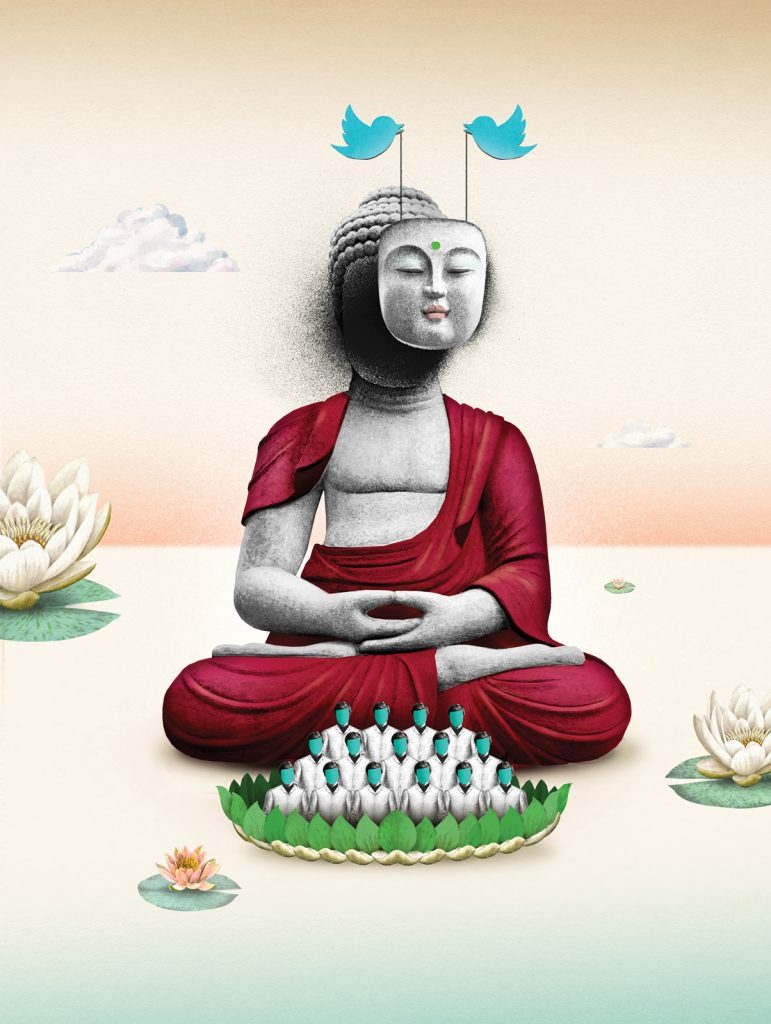Changing cultural attitudes are not the only only reason that public revelations of institutionalized sexual abuse have been at the forefront of mainstream consciousness. Abuse is nothing new. What is new is the way it is being revealed to the public—and what the public is doing with the information.
Bernhard Pörksen is a professor of media studies at the University of Tübingen in southwest Germany, with particular research interest in the new media age. His writing regularly appears in both scholarly and popular science publications, and two of his books have been on the bestseller list in Germany. He has written or co-authored books on topics such as journalism, constructivism, and communications and systems theories, and he has received accolades for his direct and engaged appearances as a speaker, talk show guest, interview moderator, and discussion partner on radio and television as well as at conventions and public events.
In the following interview, Ursula Richard of the German magazine Buddhismus aktuell discusses with Pörksen the exposure and aftermath of scandals in Buddhist communities today and how we can understand the emerging role played by digital media.
—The Editors
Ursula Richard: In an article you wrote for the German weekly newspaper Die Zeit entitled “Demystified Gurus,” you speak about the end of the era of religious and spiritual heroes. In the past few years, in fact, a number of Buddhist gurus have been unmasked. Why is this happening so frequently just now? Bernhard Pörksen: I see it as a media effect. In our age of digital networking, the authority of gurus or masters— something that was unassailable until recently—has become vulnerable. Suddenly anyone can compose a petition or post a description on blogs and forums of what has been done to them. What we are experiencing at the moment in Tibetan and Japanese Buddhist groups and at the same time in yoga schools and communities around the world is an implosion of spiritual authority.
So that we know too much . . . Too much to keep on worshiping blindly. The new dynamic as a whole is still poorly understood, because we’re too shaken by individual cases to grasp the general direction of the evolution of media. We have to understand that aura, charisma, and both spiritual and secular authority are always in part the result of successful control of information and communication—something that is becoming less possible by the day. The secluded valley, the shuttered monastery, the misdeed seen by only a limited audience—all this has virtually ceased to exist in the age of omnipresent digital media. Just a few clicks, and we can read on blogs and forums shocking reports of abused women or hear about young tulkus being beaten by monks. We learn from an open letter circulating on social media how a spiritual superstar like Sogyal Lakar brutally hurt, exploited, and humiliated people. We read on newly constructed web pages about Sakyong Mipham’s alcohol addiction and his alleged sexual assaults on women in the Shambhala community. We can familiarize ourselves effortlessly with the details of sex scandals involving the Zen masters Eido Shimano and Joshu Sasaki, or go to the Twitter hashtag #metooguru to look up the latest cases and accusations. To sum it up: the holy man has become a broken shell, the guru is a sad or pathetic or—worst-case scenario—even criminal figure. And the image of the exalted being has to compete for attention with our personal experience and the online documentation of the guru’s disgrace.
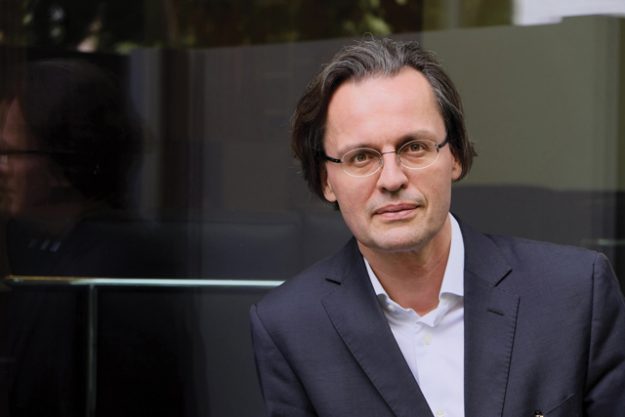
Can you give a more detailed example of the influence of digital media? Let’s consider the case of Eido Shimano. He moved to the US from Japan in the sixties and taught briefly in Hawaii, where he moved in with the Zen monk Robert Aitken, who later became famous in his own right. They had a falling out after Shimano assaulted two female students, both of whom subsequently suffered nervous breakdowns. From that time on, Aitken followed the trail of abuses committed by Shimano. He collected material, organized his own archive, and warned others about Shimano’s violations of boundaries, but he never did so in front of a large audience.
And at the time there was no digital public domain; the world stage of the Internet did not yet exist.
At some point a newspaper article about the assaults was supposed to appear, but for unknown reasons it was never published. For nearly forty years Aitken documented Shimano’s activity. He then handed over to a university all his materials and data in a sealed package marked “Eido Shimano—Do Not Open.” But in the end, he agreed to publication, and the material was shared and digitized.
And now there’s a special archive for the case online, the Shimano Archive. That’s right. Since 2010, thousands of pages in various languages have been made available, assembled by many volunteers—texts and audio and video recordings documenting decades of abuse. During the age of established mass media and suppressed newspaper articles, Shimano seemed to be practically untouchable. With the advent of digital networking, however, his reputation was destroyed at lightning speed. The case also clearly demonstrates that today’s public can wield real media power, can itself determine what is going to be made public. It has become a new player, one no longer subject to the interests of established gatekeepers—journalists, for example—who determine what is and is not to be published.
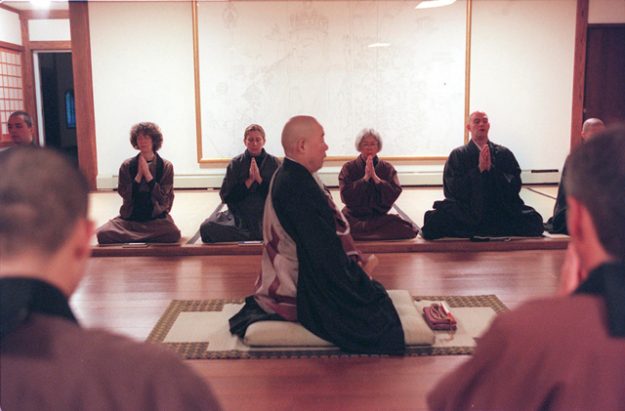
Generally speaking, is this development something good—or not? This kind of transparency, and particularly the empowerment of abuse victims through media access, must be welcomed unconditionally. But the question remains whether a form of radically disenchanted idealism can survive, or whether the many scandal-ridden communities, monasteries, and centers will simply fall apart, leaving behind nothing but depression and disillusionment.
We had a major scandal in Germany involving the Odenwald private school [in Hesse, west-central Germany], which was considered an exemplary institution for decades but is now closed because of student abuse that took place over decades. What strikes me is that although the daily newspaper Frankfurter Rundschau published an article about what was happening at the school, it had no effect whatsoever. It took ten years for the scandal to reach a wider public so that it could no longer be pushed back into Pandora’s box. The scandals surrounding Buddhist teachers have also often had long prehistories, during which people in the community wondered how much more would have to happen or become more widely known to prompt a public demand for consequences. Do you think there are elements common to all such cases— in Buddhist and other religious institutions, but also in sports, the arts, and so on—that eventually lead to a turning point? Yes, and there has to be a combination of five factors. First, according to the logic of media it’s important for victims of abuse to speak up and reveal their faces and names: this creates a domino effect of mutual encouragement and listening that will flush out whatever has been long repressed and unspoken. Second, courageous and persistent investigative journalists must be available to verify the accusations and make them known via established media. When reports about widespread abuse in the Odenwald School first appeared, journalists didn’t bother to look more closely, probably because of a mixture of inertia, skepticism, and fear of insulting the important gurus and pedagogical reformers like Hartmut von Hentig (who lived with one of the main abusers) by bringing up such an unpleasant topic. Third, courageous individuals from the inner circles of the institution have to take the investigation forward, guided by conscience and without regard for past loyalties or the fate of the perpetrators. We’ve seen repeatedly how important such “inside outsiders” are. Next, supporters and sympathizers—who may have been complaining about journalists and the “abuse of abuse”—will have to reposition themselves. Finally, to keep the topic from fading, you need an alert public with a heightened level of sensitivity. In the case of the Odenwald School, an increase in public sensitivity was created in 2010 by the second wave of revelations concerning the dramatic abuse in the Catholic Church in the United States and Ireland.
Do you see recurring patterns in the guru demystification process? And also in the reactions from the organizations those gurus led or where they were harbored and protected, often for many years? The first reaction is usually a phase of institutional self-protection and institutional narcissism, during which attempts are made to save the organization’s image, keep the scandal out of the public eye, play it down internally, and warn members against spreading unverified rumors. Hush money may flow. The victims may be discredited as untrustworthy and psychologically unstable; they may even be threatened. Media reports may be rejected as sensationalism or targeted smear campaigns.
If these measures turn out to be unsuccessful, the next phase is an often rather vague statement of remorse, issued directly by the master in a sort of publicly celebrated purification ritual. Next, the master announces a personal retreat, a period of withdrawal and self-examination, and expresses despair over having—without having wished to do so—possibly harmed male or female students. What makes these humble gestures unsatisfactory and reveals them as sheer strategy is the fact that anything from injuries to a crime like rape is recast along the way as a problem of perception on the part of the victim. What really happened remains hazy, but the master is sorry if someone feels injured, because of course he loves his students more than himself.
Whether events will be reconstructed objectively—for instance, by employing an independent law firm to review the accusations and publish the results of its investigations—will depend on the power structure inside the organization. Generally the faction of investigators will fight with the group of hushers-up and trivializers, who may fear the loss of their influence and their livelihood in the maelstrom of the scandal.
“Guru demystification could be followed by a mature spirituality that views the master as another human being.”But to return to my earlier question: Do you think there are patterns that promote covering up abuse in spiritual communities? Yes, there are. The ideal of infallibility is disastrous, because spiritual seekers who encounter the master’s failings suddenly face total loss; their very worldview seems threatened. If the guru turns out to be fallible, might that mean that everything is a lie? Furthermore, in some communities the relationship between master and student is sanctified as a mystical bond that cannot be severed without triggering a kind of karmic disaster that must be avoided at all costs. This also confers power on those who pass sexual submission off as a special privilege, a token of devotion that will somehow catapult the student far ahead on the path to enlightenment. And finally, even the basically sensible rule observed by many communities to avoid gossip and backbiting can stand in the way of disclosure; in that case the customary reaction to a troublesome warning will be to stamp the distasteful message as taboo, to return to one’s cushion with lowered eyes and observe one’s own thoughts—and to tell the bearer of bad news, “Don’t bother me with that filth.” And the tendency of some Buddhist schools to turn external irritation into an occasion for self-observation, a kind of mental exercise to ward off premature judgment, may ultimately prove counterproductive.
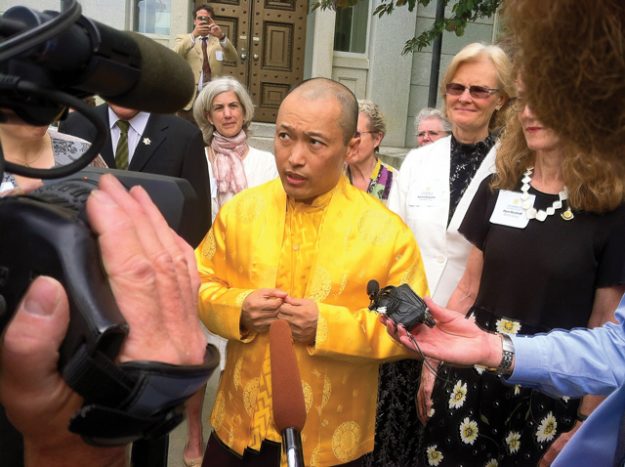
The title of this year’s biennial film festival in Berlin was “We Don’t Need Another Hero.” We already knew from Nietzsche that God was dead. If we have no God and are now losing our gurus and heroes, what will we have left? In this context you have spoken about ideals fading away. But what are we to do with our need for ideals— for people who credibly live what they teach, people who offer us hope that we can really achieve what we are striving for? I think this question can only be answered case by case. Some will react to their disappointment by continuing to seek out new masters, instant icons and heroes for the moment, if you will. Others will find ways to suppress and rationalize their disillusionment, to reinterpret it as a motive for learning how to work on their own limitations and blocks. Or they will abandon the spiritual path, turn away disenchanted. Still others will find themselves a postmythical guru, a “human master” whose authority is grounded in authenticity and accessibility. These are all possible reaction patterns.
Isn’t this also an opportunity to grow up in the spiritual sphere, where we have often held onto a longing for salvation that can barely hide its provenance in the world of childhood? What might a mature spirituality look like? How could it be channeled? I don’t know. You’re right, of course. Guru demystification could—theoretically—be followed by a mature spirituality that views the master as another human being—someone more advanced in many ways, who can teach us a lot of things but who is by no means infallible and omniscient. But, you know, I analyze media and scandal; I have no special spiritual qualifications. So I would just say that at present fairly infantile longings for salvation and worship are colliding with the general wish for demystification and the overexposed glare of a world in which any misdeed, large or small, is published immediately. And this collision of the longing for perfection with a wish for disclosure and radical transparency is a formula for certain disappointment and the pulverization of aura, charisma, and authority.
One of your books has the provocative title Wahrheit ist die Erf indung eines Lügners [“Truth is a liar’s invention”]. It contains conversations you had with Heinz von Foerster, a spokesman for radical constructivism. In connection with the disclosures about gurus, we often encounter the argument that everything is a matter of perception. A “victim” is said to experience acts as, say, sexually aggressive or to perceive certain kinds of touch as blows, and thus labels certain situations as violating or harmful. But we’re told that the guru’s intention was to help that person (to overcome the ego, to reach enlightenment, or whatever), not to commit any harm. Thus his perception of what he was doing was completely different. And so a statement of regret is issued by representatives from the guru’s organization—not regret for his activities but rather regret that the “victim” perceived them as harmful. In your opinion, was there an actual deed, a single reality, or were there only conflicting perceptions? Of course there was a deed. And the victim’s accusations and the perpetrator’s attempts to trivialize them are not equally true. In my view that would be a total misunderstanding of constructivism.
My friend and mentor Heinz von Foerster was, like many other first-generation constructivists, galvanized by the desire to immunize thought against dogmatism. He had survived the Nazi period in Berlin as a so-called quarter-Jew, and he was profoundly shaken by the horrors carried out in the name of ideologically promoted truths. But he didn’t want to lock jaws with his opponents under any circumstances—to become something like an ideologue by taking up an anti-ideology. So he created a philosophy with a positive departure point, a primer for thinking differently—a collection of conundrums and correctives rather than a closed system of thought pretending to stand in for some absolute. The version of constructivism that then, to his surprise, became fashionable in academic circles he found utterly suspect. And I’ll add this: The kind of constructivism that is used to relativize the reality of abuse has itself become dogma, a tool of the powerful, a gimmick for propaganda coated with something passing as epistemology. Melodramatically stated, a consistent constructivism should always be a philosophy of the underdog: it corrects the ideologies of everyday life whether large or small, opposes any totalitarian claim to truth, and at the same time applies skepticism, cheerfully, in order to keep seeing more. That’s all there is to it.
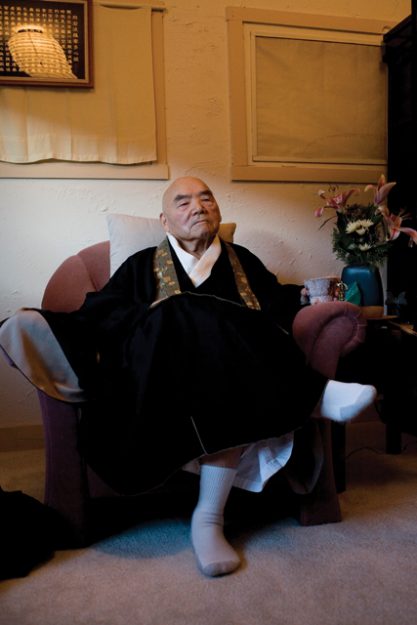
And yet the assertion that there is no truth but only the individual’s perception is used to put down the victim. Then you can say that someone like Sogyal Lakar always acted with good intentions but unfortunately a few people felt they had been violated. That’s exactly the way his followers argue, and what really happened remains unresolved. You end up with nothing but an exchange of different perceptions and pictures of reality, and everyone is ultimately responsible for their own worldview. Yes, that’s a danger, and it demands that we discriminate accurately. Because of course there is the level of fact, or reality of the first order. Whether someone was beaten up, molested, sexually abused over a period of years can be established—if necessary with the help of the police and investigating agencies and then in court by the state prosecutor.
But good intentions and pseudo-spiritual justifications belong to the level of meaning, which is reality of the second order. At this level you have countless different versions, all governed by dispute and manifold interpretations, which can be exploited—though this is, again, wrong thinking or a strategy gimmick—to cast doubt on what has happened at the level of the first order, according to the principle that since there are different interpretations, what actually happened is also debatable. And someone coming from the same basis—that of personal construction of meaning—can claim to belong to the tradition of “crazy wisdom,” where anything that takes place is solely for the student’s benefit. But on closer examination it’s clear that such ideas—particularly when they are a reaction to the threat of scandal—are as a rule nothing but the sanctimonious formulation of nonsense that isn’t believed even by those who present them. Potentially monstrous acts have to be whitewashed in some way—that’s the goal. And anything may serve that end: bending epistemological theory or telling fairy tales about crazy wisdom, whereby every dirty trick and every act of cruelty has its own inner logic and truth, so that at the end of the day we’re quarreling about someone’s hurt feelings.
It’s often hard to believe that people in positions of responsibility at a spiritual organization can claim not to have noticed the scandalous activities of their guru over a period of years and are just as flabbergasted as any total outsider when the guru is outed. But this is what they often say. Obviously it’s partly self-protection; but might it not be that the perception of such people has changed to such a degree that they actually see only what conforms to the institution’s view and completely suppress everything else? As Goethe is reported to have said in conversation, “One sees only what one already knows or is familiar with.” Perhaps we could also say, “One sees only what one has to see in order to remain part of the group.” That’s exactly what I observe when I analyze the dynamics of a community—spiritual or secular—that has been shaken by some scandal concerning sexual, financial, or some other manipulative activity. There are those who virtually could see only what they wanted to see and wanted to believe. So they are virtually blind—and blind to their own blindness. This does come up. And in general, the more sectarian the group, the stronger the selective perception.
More often, though, there are people who sense something but suppress their internal whispering, their doubts, their inner admonishments; they whitewash what they have seen and construct the weirdest explanations to escape painful conclusions, unavoidable knowledge, and the responses that would be required of them. They want to preserve the community, along with their sense of belonging and closeness to the master, so they minimize the dissonance they encounter as vigorously as they can and with all available means. At this stage the not-seeing and not-knowing begins to change in form and color; what you see at times is simple self-deception, practiced tentatively at first but then more and more intensely, until one day they believe it themselves.
Institutions and traditions need a kind of narrative glue to hold them together, and these narratives seldom are without a good deal of mythology or a highly selective recounting of factual events. Debunking narrative structures—which happens when abuse is revealed—can, by undermining shared understandings, push us further toward radical individualism. The explosion of digital media can exacerbate this. Do you see this as a problem, and if so do you have thoughts about how individuals and communities might best navigate through the process? I find this a really difficult question, because one thing becomes clear: in a time marked by the transparency and individualization promoted by digital media, spiritual communities have to reset the relationship between the particular and the general. Under pressure, a narrative whose authority seemed clear a moment ago becomes unconvincing or is intercepted by the alluring stories featuring Me that we can glimpse in digital media.
So how can a community deal with this problem? How can it get a toehold on this precarious ledge and avoid repressing the particular while still paying the general story the recognition it deserves?
I think as a first step we have to abandon our old ideals of perfection—and I do mean abandon them completely; they can be retained only if we’re willing to start thinking like fundamentalists. As Immanuel Kant said, human beings are created from crooked timber; they are flawed, their existence is inevitably fractured, and even the great narratives no longer provide a place to rest.
Can spirituality survive if it is radically informed and individualized? I think so; but only if it observes the intrinsic value of community and social contact and integrates them as part of life, since they are basic human requirements. And we need to retire the apotheosized figures of masters and the narratives we assumed were perfect; paradoxically enough, in the long run they pose a threat to social cohesion, to community, because they are simply no longer persuasive.
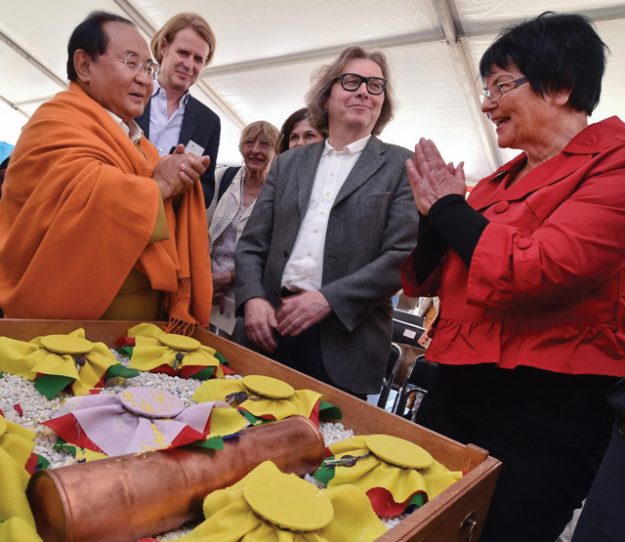
We live in a time of outrage, of instant excitement or irritation, a time of scandalization, as a glance at social media demonstrates, and as you have described in your latest book, Die grosse Gereiztheit (“The Great Irritation”). And we seem to have become not so much the observers of events as quick judges who proclaim their moral view to be absolute and make it the benchmark for all things. I also see this among Buddhists who deal with the more dubious aspects of today’s Buddhism and its institutions or are involved in guru demystification. I think it is an important and timely task to lift the veil of silence that covers abuse of every kind along with defamatory comments about other religions and their adherents. We need to expose such behavior and take the appropriate measures. But how can we achieve this and avoid hypocrisy and one-dimensionality ourselves? Do we need an ethics of enlightenment for the digital age? What might that look like? That’s a really important question. In my latest book I attempted to design an educational utopia—a proposal of sorts— to keep from being personally stuck in the inevitable gloom of crisis analysis. My question was this: How can we curb the unhealthy trend toward instant excitement, sustain a climate of communication that encourages searching conversation, and reset the balancing act of clarification for an age in which every owner of a smartphone can address the public instantly? My own answer, in short, is this: We need to transform today’s digital society into tomorrow’s editorial society. What do I mean by that? In an editorial society the ideals and maxims of good journalism will be a part of general education. For example: First check, then publish! Be skeptical, even of your own opinions! Scrutinize your sources! Always listen to the other side! Act transparently in dealing with your own mistakes! Pay attention to relevance and proportion: don’t make an incident larger than it is!
The maxims of good journalism contain an ethics for the community, one that concerns everyone today. It should be taught in schools as a separate subject. Now that we have acquired media power, we must do everything we can to attain media maturity. Seriously, what would be the alternative? State supervision? More elaborate laws? The greatest possible control of communication? I consider such proposals to be ultimately worthless, because they spring from a basic distrust of investigation and a pessimistic view of education. As an optimist on principle, I wanted to take a stand against them.
In conclusion, is there also a maxim relating to abuse issues? Yes. However difficult and painful it may be, at some point we have to accept the unthinkable as thinkable, in spite of our own experience of beauty, tranquility, and kindness. “See what is different from you, in all its strange-ness and fearfulness” might be the relevant categorical imperative to guide perception. And then investigate carefully and impartially, and act immediately to empower victims and prevent further suffering.
♦
Published with permission of Buddhismus aktuell.
Thank you for subscribing to Tricycle! As a nonprofit, we depend on readers like you to keep Buddhist teachings and practices widely available.
